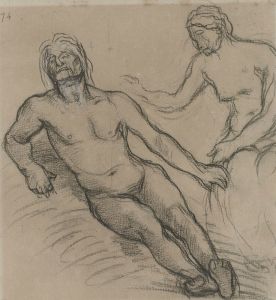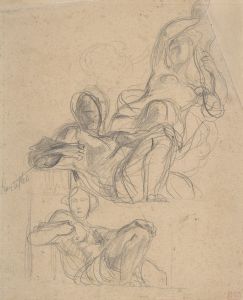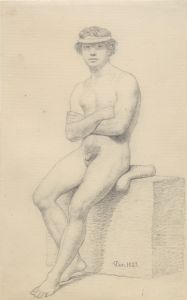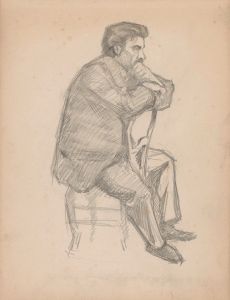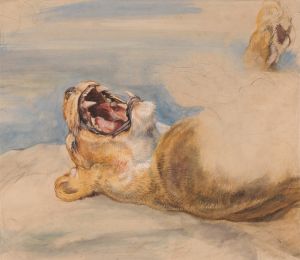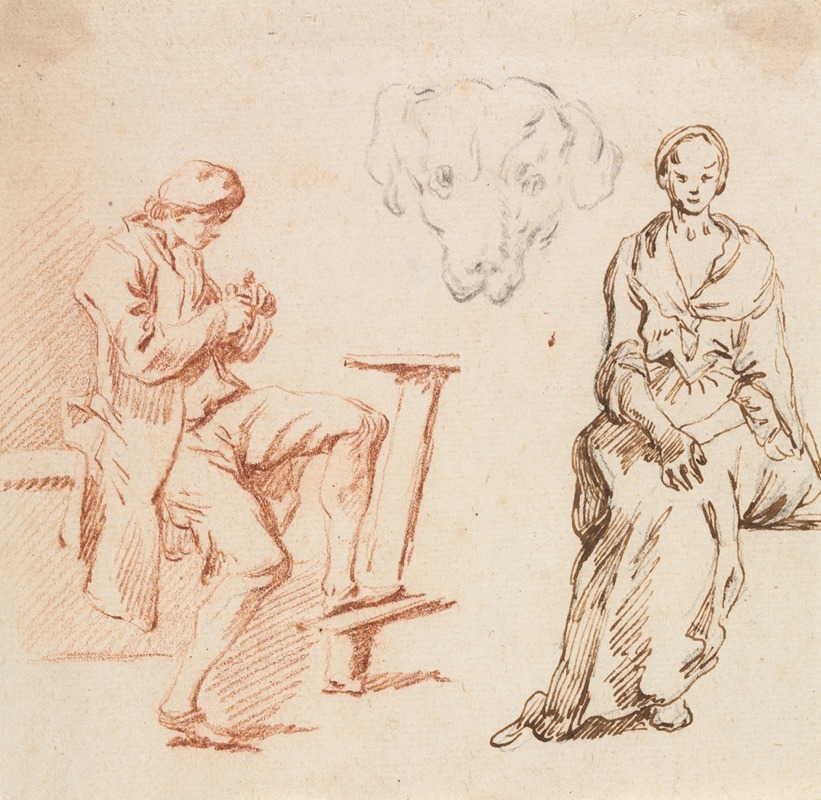
Sheet of Studies: Seated Man, Head of a Dog, Seated Woman
A hand-painted replica of Claude-Joseph Vernet’s masterpiece Sheet of Studies: Seated Man, Head of a Dog, Seated Woman, meticulously crafted by professional artists to capture the true essence of the original. Each piece is created with museum-quality canvas and rare mineral pigments, carefully painted by experienced artists with delicate brushstrokes and rich, layered colors to perfectly recreate the texture of the original artwork. Unlike machine-printed reproductions, this hand-painted version brings the painting to life, infused with the artist’s emotions and skill in every stroke. Whether for personal collection or home decoration, it instantly elevates the artistic atmosphere of any space.
Claude-Joseph Vernet was a prominent French painter known for his landscape and maritime paintings during the 18th century. Born in Avignon in 1714, Vernet became one of the most celebrated artists of his time, particularly noted for his ability to capture the atmospheric effects of light and weather in his works. His paintings often depicted serene landscapes, bustling ports, and dramatic seascapes, which were highly sought after by collectors and patrons across Europe.
The artwork titled "Sheet of Studies: Seated Man, Head of a Dog, Seated Woman" is an example of Vernet's skill in capturing human and animal figures, although this particular piece is more of a study rather than a finished painting. As a study, it likely served as a preparatory work where Vernet explored different poses and compositions. Such studies were common practice among artists of the time, allowing them to experiment with form and perspective before committing to a larger, more detailed composition.
In "Sheet of Studies," Vernet demonstrates his keen observational skills and his ability to render figures with a sense of realism and vitality. The seated man and woman in the study are depicted with careful attention to posture and expression, suggesting Vernet's interest in capturing the nuances of human form and emotion. The inclusion of the head of a dog adds an element of domesticity and familiarity, which was a common theme in Vernet's work, reflecting the everyday life and natural world that he often portrayed.
Vernet's studies were typically executed in mediums such as pencil, ink, or chalk, allowing for quick sketches and adjustments. These studies were essential to his creative process, providing a foundation for his larger compositions. While "Sheet of Studies: Seated Man, Head of a Dog, Seated Woman" may not be as widely recognized as some of his finished paintings, it offers valuable insight into Vernet's artistic process and his approach to capturing the world around him.
Throughout his career, Vernet's work was characterized by a harmonious blend of naturalism and idealism, a style that resonated with the tastes of the Enlightenment period. His ability to depict the sublime beauty of nature and the subtle intricacies of human and animal figures secured his reputation as one of the leading artists of his era.
Vernet's influence extended beyond his lifetime, as his works continued to inspire future generations of artists. His studies, such as "Sheet of Studies," remain important for understanding the development of his artistic techniques and the broader context of 18th-century European art. Today, Vernet's works can be found in major museums and collections worldwide, where they continue to be appreciated for their technical skill and evocative portrayal of the natural world.





